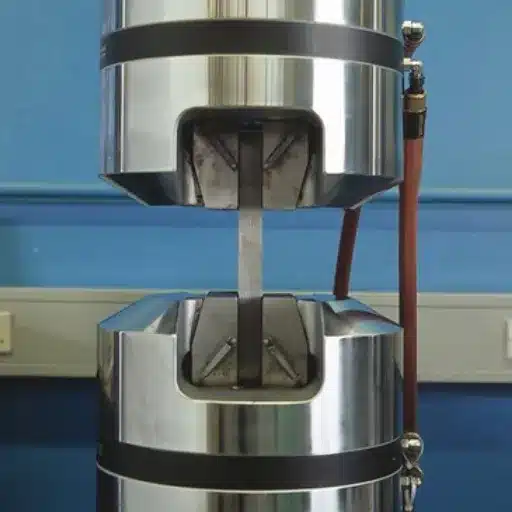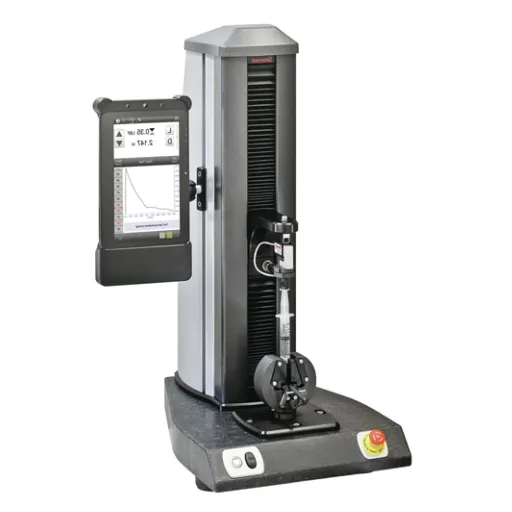Bend test machines are used significantly when measuring the mechanical properties of products because they are very accurate and dependable. Such a piece of measurement is absolutely necessary when one is performing evaluation of the amount and strength of bending a material can withstand. Unfortunately, there are so many types of bend test machines in the market, and they all come with different prices owing to the diverse atrributes of each individual machine such as its acceptable usage, levels of testing, and added features and technology at disposal. The purpose of this post is to serve as a tool that will break down all the factors that determine why a bend test machine may be high priced and any other questions in this regard. It as will provide specific reasons and examples of why investing in a particular type of machine will prove beneficial to you. It does not matter if you wish to improve your present testing equipment or you wish to engage in material testing for the first time – the guide includes all the information needed for purchasing the appropriate equipment that will be of use for your purposes.
What Factors Influence Bend Test Machine Prices?
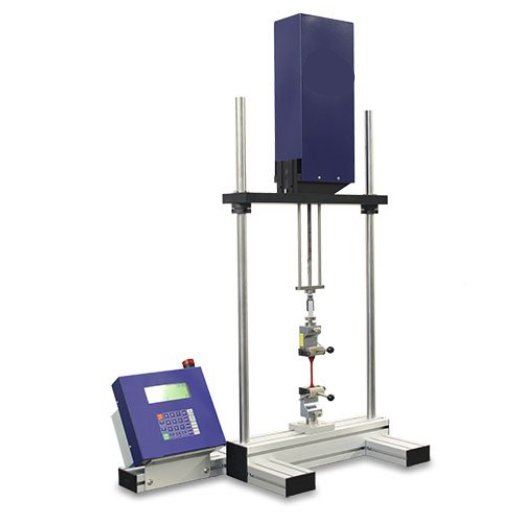
There are some major factors that control the pricing of the bending testing machines:
1.Configuration and Features – The bend test machine price is greatly affected by the configuration, whether manual, semi-automatic, or fully automated. Usually, highly automated models or complex configuration machines tend to be more expensive.
2.Load Ratings – The machines are designed to handle different capacity loads and the configuration advanced load ratings carries the implication of more expensive equipment.
3.Material Appropriateness – These devices are limited to test few materials for example metals, composites, or plastics which requires more features hence influencing the prices.
4.Standard Guidelines – The machines are manufactured as per institutional standard guidelines, for instance ASTM or ISO standards, which sometimes calls for extraordinary construction or modifications, which are cost-enhancing.
Data management including all kinds of hardware and
5.software integration – This is another additional function which comes with every testing machine that deals with several forms of data management. It includes analysis, data collection and report writing and more cost is added
These considerations would assist you in determining the type of machine which equipment within these constrains as well.
How Does the Type of Tester Affect Cost?
The type of tester significantly impacts cost due to variations in complexity, functionality, and application. For example, universal testing machines capable of performing multiple tests, such as tensile, compression, and bending, are generally more expensive than single-function testers due to their versatile design and advanced components. Specialized testers, such as fatigue or impact testing machines, may require additional features, like precise control mechanisms or proprietary software, further increasing costs. Additionally, automated or high-capacity models designed for industrial-scale operations tend to incur higher expenses compared to manual or low-capacity testers designed for smaller-scale applications. These differences highlight the direct relationship between the tester’s capabilities and its overall price.
Are Hydraulic Systems More Expensive Than Manual Systems?
Yes, hydraulic systems are generally more expensive than manual systems due to their increased complexity, higher performance capabilities, and the additional components they require, such as pumps, fluids, and actuators. These systems are designed for tasks requiring greater force and precision, which translates into higher equipment and maintenance costs compared to simpler manual systems.
Does Material Testing Complexity Impact Pricing?
Yes, material testing complexity significantly impacts pricing. Advanced testing methods, such as non-destructive testing (NDT) or multi-axis fatigue testing, often involve specialized equipment and highly trained personnel, which increase costs compared to standard, straightforward testing. Additionally, factors such as the type of material, required precision, and customization of test parameters contribute to the overall expense.
How to Choose a Bend Test Machine for Your Needs?
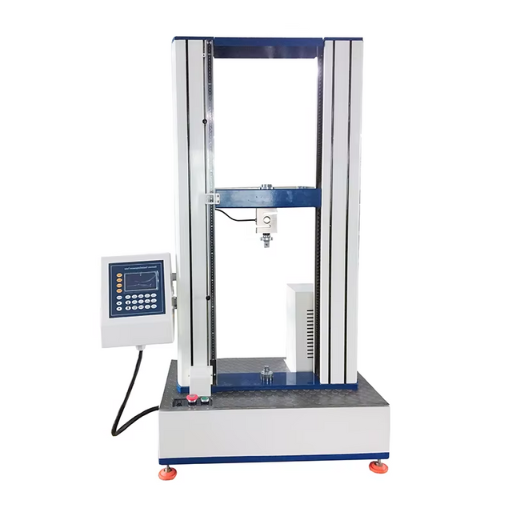
When selecting a bend test machine, consider the material types and thicknesses you plan to test, as this determines the required force capacity and machine configuration. Focus on key features such as adjustable bending fixtures, precision controls, and data acquisition capabilities to ensure accurate results. Additionally, evaluate the compliance of the machine with relevant industry standards (e.g., ASTM, ISO) and factor in the level of automation needed based on your testing volume to optimize efficiency and cost-effectiveness.
What Are the Key Features of a Universal Tensile Machine?
A universal tensile machine is designed to perform a wide range of material testing applications, and its key features are engineered to ensure precision, reliability, and versatility. Below are the critical features with detailed insights:
- Load Capacity and Accuracy
Universal tensile machines offer a broad spectrum of load capacities ranging from a few Newtons to several hundred kilonewtons (kN), depending on the model. High-precision load cells are integrated to ensure measurement accuracy within a margin of ±0.5% or better, making them suitable for testing materials with varying strength properties.
- Adjustable Crosshead Movement
The crosshead, equipped with motorized or hydraulic controls, allows for variable speed adjustments (e.g., 0.001 to 1000 mm/min) to accommodate different testing protocols. This ensures compatibility with tests requiring specific strain rates or elongation conditions.
- Interchangeable Gripping Fixtures
Universal tensile machines include modular gripping systems to handle diverse specimen geometries such as round bars, flat sheets, threads, or wires. Fixtures like wedge grips, pneumatic grips, and V-jaw grips enhance usability across various material types.
- Precision Alignment Systems
To reduce asymmetrical loading, these machines incorporate high-precision alignment guides or self-aligning fixtures. This is critical for preventing bending stresses, especially in compliant or irregular specimens.
- Data Acquisition and Software Integration
Equipped with advanced data acquisition systems, universal tensile machines offer real-time monitoring of force, displacement, strain, and stress. The accompanying software typically supports data export formats (e.g., CSV, XML) and integrates with standardized testing procedures such as ASTM D638 and ISO 6892-1.
- Extensometer Compatibility
Modern universal tensile machines enable integration with clip-on or non-contact extensometers for strain measurement. Non-contact options, such as video extensometers, provide high precision when measuring elongation in delicate or high-strain materials.
- Compliance with Standards
These machines are designed to meet or exceed international standards, including ASTM (e.g., E8/E8M) and ISO (e.g., 527), ensuring test validity and global acceptability of results.
- Automation and User Interface
Advanced models incorporate automated controls for test setup, specimen alignment, and start/stop procedures. Touchscreen interfaces or PC connectivity simplify user interactions, enabling intuitive operation and streamlined workflows.
With these features, a universal tensile machine becomes an indispensable tool for industries ranging from aerospace and automotive to biomedical, ensuring robust material characterization to meet complex engineering requirements.
When to Consider a Servo Test System?
You should consider a servo test system when precision, reliability, and real-time control over testing parameters are critical. Servo systems are ideal for applications requiring dynamic testing, such as fatigue tests, cyclic loading, or complex stress-strain evaluations. They provide exceptional accuracy and responsiveness, making them well-suited for industries like aerospace, medical devices, and composite material testing, where stringent compliance and repeatability are essential.
Is a Customization Option Necessary for Specific Tests?
Yes, a customization option is often necessary for specific tests to meet the precise requirements of unique testing applications. Different materials, environmental conditions, and mechanical parameters demand tailored configurations to ensure accurate and reproducible outcomes. Customization allows for the adaptation of testing equipment to accommodate specialized test protocols, such as bespoke grips, temperature chambers, or software integrations. This flexibility is particularly critical in industries like aerospace or medical devices, where regulatory standards and testing complexities necessitate highly specialized approaches.
Comparing Bend Testing with Other Test Equipment
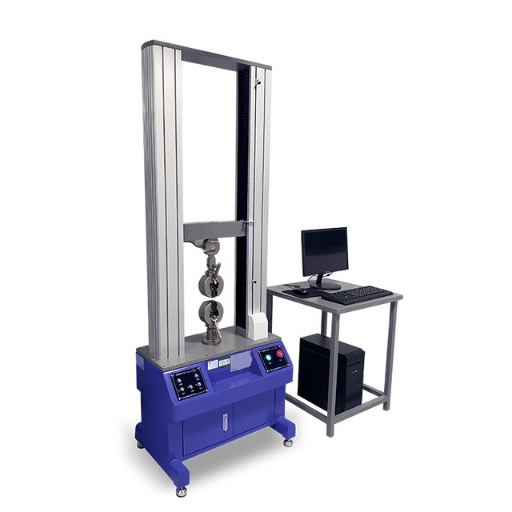
Bend testing distinguishes itself from other test equipment by evaluating material flexibility and ductility, while other methods like tensile testing, compression testing, hardness testing, impact testing, and fatigue testing measure different mechanical properties under specific conditions and forces.
|
Test Type |
Key Purpose |
Material Focus |
Force Type |
Key Metric |
|---|---|---|---|---|
|
Flexibility |
Ductile Metals |
Bending |
Flex Limit |
|
|
Tensile Testing |
Strength |
All Materials |
Tensile |
Tensile Str |
|
Compression Test |
Compression |
Rigid Substrts |
Compressive |
Comp Stren |
|
Hardness Testing |
Surface Hard |
Metals, Alloys |
Indentation |
Hard Scale |
|
Impact Testing |
Toughness |
Brittle Metals |
Shock Force |
Imp Stren |
|
Fatigue Testing |
Durability |
Structures |
Cyclic Load |
Life Cycle |
What Makes Flexural Bend Testing Unique?
Flexural bend testing is unique because it evaluates the material’s ability to withstand stress applied perpendicular to its longitudinal axis, providing critical insights into its flexural strength and modulus. Unlike tensile or compression testing, this method simulates real-world scenarios where materials experience bending forces, making it particularly significant for assessing beams, plates, and other structural components. The test captures the interplay between tension and compression within a single specimen, delivering a comprehensive understanding of the material’s behavior under such dual stresses. Furthermore, it is especially useful for brittle materials like ceramics and composites, which are prone to failure under bending loads rather than direct tension or compression.
How Does Compression Testing Differ from Bend Testing?
Compression testing and bend testing differ in purpose, application, stress distribution, and specimen deformation, among other parameters.
|
Parameter |
Compression Testing |
Bend Testing |
|---|---|---|
|
Purpose |
Compressive strength |
Flexural strength |
|
Stress |
Uniform compression |
Bending stress |
|
Deformation |
Shortening of specimen |
Outer tension, inner compression |
|
Application |
Bulk material properties |
Structural integrity |
|
Specimens |
Cylinders or cubes |
Beams or plates |
|
Failure Mode |
Buckling/crushing |
Fracture |
|
Material Types |
Metals, polymers |
Brittle materials |
|
Load Direction |
Axial |
Perpendicular |
Why Choose Dynamic Testing Machines?
I choose dynamic testing machines because they provide precise and reliable data on material behavior under varying loads and real-world conditions. These machines are essential for evaluating fatigue, durability, and performance in applications where materials undergo repeated stresses. By simulating dynamic forces, such as vibrations or cyclic loads, they allow for accurate analysis and prediction of a material’s lifespan, making them a critical tool in industries like aerospace, automotive, and construction.
What Are the Benefits of Using Advanced Test Machines?
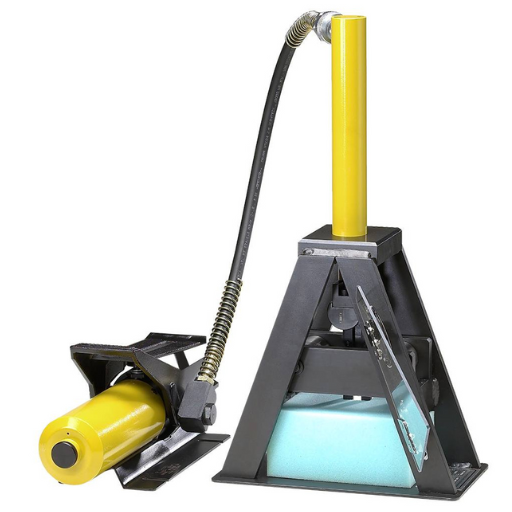
- Enhanced Accuracy and Reliability: Advanced test machines are designed to deliver precise measurements and consistent results, ensuring data integrity and reliability for critical applications.
- Material Performance Insights: These machines provide detailed information on how materials behave under various conditions, enabling better predictions of durability, fatigue, and overall performance.
- Cost Efficiency: By identifying potential material failures early in the design process, advanced testing reduces the risk of costly defects or product recalls.
- Application Versatility: They accommodate a wide range of testing scenarios, from static loads to complex dynamic forces, meeting the diverse needs of industries like automotive, aerospace, and construction.
- Regulatory Compliance: Advanced test machines help manufacturers meet stringent industry standards by delivering data that supports compliance with safety and performance regulations.
- Innovative Product Development: With the ability to simulate real-world conditions, these tools play a crucial role in innovating new materials and enhancing product design.
How Does Automation Improve Testing Accuracy?
Automation enhances testing accuracy by minimizing human error, enabling consistent execution of tests with precise repeatability. Automated systems are engineered to follow predefined protocols with high fidelity, which eliminates discrepancies caused by manual variations. Furthermore, these systems provide real-time data collection and analysis, ensuring that measurements are highly accurate and reliable. Sophisticated algorithms embedded in automation platforms can also detect anomalies and perform diagnostic checks during tests, further improving data integrity and reducing the risk of false conclusions. Additionally, automation allows for high-throughput testing, ensuring that large volumes of tests can be conducted without compromising precision.
Can High-Quality Machines Reduce Operational Costs?
Yes, high-quality machines can significantly reduce operational costs. Advanced machinery is designed for durability, efficiency, and precision, which minimizes downtime and the frequency of repairs. Their reliability reduces waste, improves productivity, and often results in lower energy consumption. Furthermore, by integrating automated systems, these machines optimize workflows, leading to cost savings through enhanced efficiency and reduced labor requirements. The upfront investment in high-quality machines is often offset by long-term cost reductions and improved operational performance.
Are Adjustable Fixtures Important for Flexibility?
Yes, adjustable fixtures are critically important for flexibility in various operational processes. They allow for quick adaptation to different tasks, workpieces, or production requirements, minimizing downtime and maximizing versatility. This flexibility supports customization and scalability, particularly in industries such as manufacturing, machining, and assembly. Modern adjustable fixtures often incorporate advanced materials and designs, enhancing precision and repeatability, while also reducing the need for multiple specialized tools, ultimately saving time and costs.
Understanding Astm and Iec Standards in Bend Testing
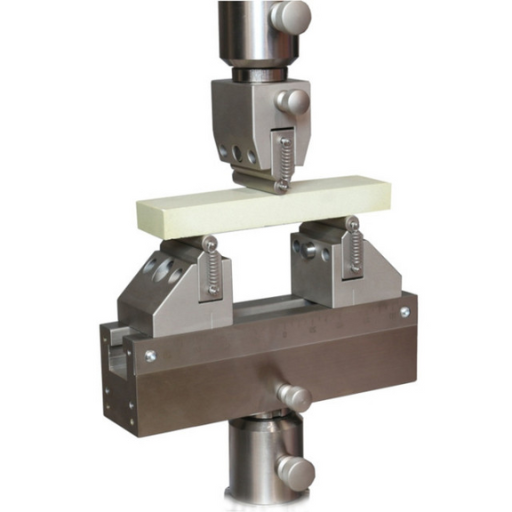
ASTM and IEC standards are critical for ensuring consistency and reliability in bend testing procedures across industries. ASTM standards, such as ASTM E290, outline the protocols for bend testing metallic materials, specifying parameters like specimen dimensions, testing apparatus, and angle of bending to evaluate ductility and fracture behavior. Similarly, IEC standards, like IEC 60811-512, focus on bend testing for electrical cables and insulation materials, detailing the environmental and mechanical testing conditions to assess flexibility and durability. Adherence to these standards ensures accurate, reproducible results and facilitates global compliance and interoperability in material testing.
What Are the Astm Requirements for Bend Tests?
- Specimen Preparation: ASTM standards, such as ASTM E290, mandate precise specifications for sample dimensions, surface finish quality, and edge conditioning to ensure uniformity and comparability in bend test results.
- Bend Angle and Radius: The guidelines specify the required bend angle (e.g., 90°, 180°) and minimum bend radius, which vary depending on the material type and thickness to appropriately evaluate ductility and performance.
- Testing Equipment: The apparatus used in bend tests must meet ASTM requirements for accuracy and consistency, including calibrated bending fixtures and supports to minimize measurement variability.
- Test Speed: ASTM standards outline controlled bending speeds to prevent unnecessary strain rate effects that could falsify the material’s true ductility and stress response.
- Environmental Conditions: Testing environments must conform to ASTM norms, requiring standardized temperature and humidity conditions during testing to eliminate external influences on material behavior data.
How Do Iec Standards Apply to Cable Bend Testing?
IEC standards, particularly IEC 60811, provide comprehensive guidelines for cable bend testing to ensure the mechanical robustness and flexibility of cables under real-world conditions. These standards specify the procedures for testing cables’ resistance to repeated bending and torsion while maintaining functionality. Key parameters such as bending radius, number of bending cycles, and applied forces are exactingly defined to create repeatable and reliable testing conditions. Additionally, they address the importance of consistent environmental factors, such as temperature, to accurately simulate the operational conditions that cables are expected to endure. By adhering to IEC standards, manufacturers ensure cable quality, compliance, and durability across numerous applications.
Why Compliance with Standards Is Crucial for Strength Testing?
Compliance with standards is crucial for strength testing because it ensures consistency, accuracy, and reliability in results. By adhering to established guidelines, I can guarantee that tests are reproducible under controlled conditions, enabling valid comparisons across different products or materials. This alignment with standards also minimizes errors and ensures adherence to industry regulations, which is essential for meeting safety, performance, and quality requirements. Ultimately, following these standards fosters trust and credibility in both testing processes and outcomes.
Reference Sources
-
TestResources – Bend Test Machines: A manufacturer and supplier of various testing machines, including bend test machines.
-
Thwing-Albert – Bending Resistance Testing Equipment: Offers equipment for testing bending resistance, including stiffness testers and point bending fixtures.
-
Realityworks – Bend Tester for Welding: Provides an 8-ton hydraulic bend test fixture for educational and lab purposes.
-
Humboldt – Combined Compression/Flexural Testing Machine: Features machines suitable for compressive and bending strength tests of various materials.
-
MeasurUSA – Concrete Flexural Testing: Offers manual flexural testing machines for concrete and other materials.
Frequently Asked Questions (FAQs)
Q: What are the cost determinants of a tensile testing machine?
A: There exist a couple of factors that affect the price of a tensile testing machine. The very category of the material under examination matters especially when it’s metals, plastics, or wire and cable and so does the force capacity of that machine measured in kilonewtons (e.g., 50 kN). Additionally, there are extra features such as grips and fixtures plus some premium bend machines that add on the price.
Q: In what way is the usage of tensile strength testing machine similar to that of bend test machine?
A: A tensile strength testing machine is used to determine the tensile strength of a material by measuring where the maximum force required to pull that material exceeds and it fractures. A bend test machine on the other hand tests the resistance of a material to bending forces generally with a guided bend set up or a four point probe.
Q: Are universal testing machines suitable for all types of materials?
A: Yes, universal testing machines are designed to be versatile and can test a wide range of materials including metals, plastics, and alloys. They can be configured with different grips and fixtures to accommodate various test types, such as tensile strength testing, peel tests, and guided bend tests.
Q: What is the significance of ASTM standards in flexural testing equipment?
A: ASTM standards ensure that flexural testing equipment like tensile testers and bend test fixtures are reliable and produce consistent results. They provide guidelines on test procedures, equipment specifications, and performance criteria, ensuring quality bend and tensile strength testing.
Q: How is a universal tensile tester configured for different tests?
A: A universal tensile tester can be configured with various accessories such as clamps, grips, and fixtures to perform different tests. For instance, it can switch between tensile strength testing, bend tests, and peel tests by changing the test fixtures and probes used.
Q: Why is the maximum force capacity important in a tensile testing machine?
A: The maximum force capacity indicates the highest force that the tensile testing machine can apply to a material. This is crucial for testing materials with high fracture strength and ensures that the machine is capable of performing tests up to the required force levels, such as 50 kN, without damage.
Q: What role do controllers play in the operation of a universal testing machine?
A: Controllers are essential for the operation of a universal testing machine as they manage the test parameters, data acquisition, and overall machine function. They allow users to precisely control the test process and collect data for analysis, ensuring accurate results.
Q: Can a bend test fixture be used for tensile strength testing?
A: No, a bend test fixture is specifically designed for bend tests and is not suitable for tensile strength testing. Tensile strength testing requires different grips and fixtures that can securely hold the material while it is being pulled until failure.





